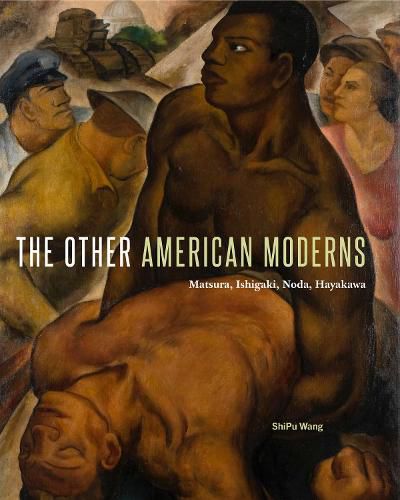Readings Newsletter
Become a Readings Member to make your shopping experience even easier.
Sign in or sign up for free!
You’re not far away from qualifying for FREE standard shipping within Australia
You’ve qualified for FREE standard shipping within Australia
The cart is loading…






In The Other American Moderns, ShiPu Wang analyzes the works of four early twentieth-century American artists who engaged with the concept of Americanness : Frank Matsura, Eitaro Ishigaki, Hideo Noda, and Miki Hayakawa. In so doing, he recasts notions of minority artists’ contributions to modernism and American culture.
Wang presents comparative studies of these four artists’ figurative works that feature Native Americans, African Americans, and other racial and ethnic minorities, including Matsura and Susan Timento Pose at Studio (ca. 1912), The Bonus March (1932), Scottsboro Boys (1933), and Portrait of a Negro (ca. 1926). Rather than creating art that reflected Asian aesthetics, Matsura, Ishigaki, Noda, and Hayakawa deployed imagery of the Other by the Other as their means of exploring, understanding, and contesting conditions of diaspora and notions of what it meant to be American in an age of anti-immigrant sentiment and legislation.
Based on a decade-long excavation of previously unexamined collections in the United States and Japan, The Other American Moderns is more than a rediscovery of forgotten minority artists: it reconceives American modernism by illuminating these artists’ active role in the shaping of a multicultural and cosmopolitan culture. This nuanced analysis of their deliberate engagement with the ideological complexities of American identity contributes a new vision to our understanding of non-European identity in modernism and American art.
$9.00 standard shipping within Australia
FREE standard shipping within Australia for orders over $100.00
Express & International shipping calculated at checkout
In The Other American Moderns, ShiPu Wang analyzes the works of four early twentieth-century American artists who engaged with the concept of Americanness : Frank Matsura, Eitaro Ishigaki, Hideo Noda, and Miki Hayakawa. In so doing, he recasts notions of minority artists’ contributions to modernism and American culture.
Wang presents comparative studies of these four artists’ figurative works that feature Native Americans, African Americans, and other racial and ethnic minorities, including Matsura and Susan Timento Pose at Studio (ca. 1912), The Bonus March (1932), Scottsboro Boys (1933), and Portrait of a Negro (ca. 1926). Rather than creating art that reflected Asian aesthetics, Matsura, Ishigaki, Noda, and Hayakawa deployed imagery of the Other by the Other as their means of exploring, understanding, and contesting conditions of diaspora and notions of what it meant to be American in an age of anti-immigrant sentiment and legislation.
Based on a decade-long excavation of previously unexamined collections in the United States and Japan, The Other American Moderns is more than a rediscovery of forgotten minority artists: it reconceives American modernism by illuminating these artists’ active role in the shaping of a multicultural and cosmopolitan culture. This nuanced analysis of their deliberate engagement with the ideological complexities of American identity contributes a new vision to our understanding of non-European identity in modernism and American art.